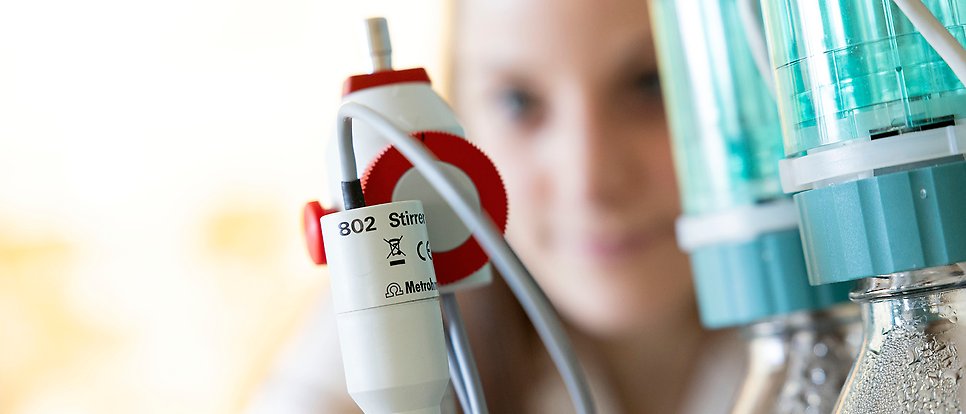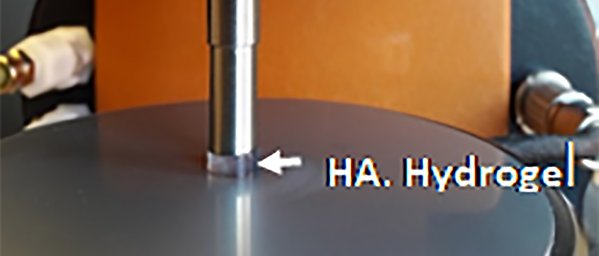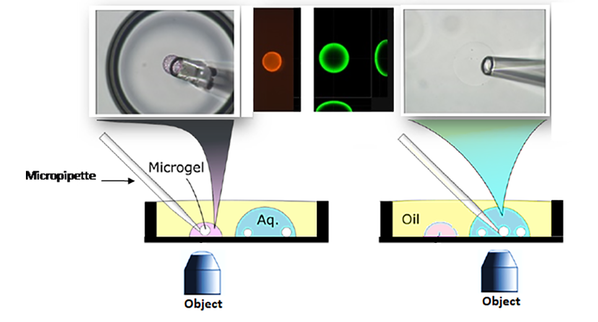Gels for drug delivery

Research with a main focus on fundamental aspects of the interaction between hydrogels and different categories of drugs and excipients.
Details
- Funder: Vinnova
Gels for drug delivery
Charged polymer networks have the possibility to absorb water to form hydrogels, soft materials with interesting mechanical properties. In drug delivery they are useful as carriers of various types of drugs, including small molecules for cancer therapy and large molecules of biological origin for treatment of infections and genetic diseases. Microgels are microscopic hydrogel particles that can be injected into the body or applied to the skin. Hydrogels are useful in drug delivery, in part because they have the capacity to encapsulate and store large amounts of drugs in an environment that protects the drugs from degradation, and in part because the polymer network offers ways to control the rate of release of the drug.
Our research in this field is mainly focused on fundamental aspects of the interaction between hydrogels and different categories of drugs and excipients (helper molecules) where the interplay between electrostatic and hydrophobic interactions and the elastic properties of the polymer networks is important. To this end we study the microstructure and stability of complexes formed between polyelectrolyte networks, drug molecules and excipients. A combination of experimental and theoretical methods are used to explain how the charge of proteins and peptides and the self-assembling properties of amphiphilic molecules determine their partitioning between the hydrogel and the surroundings, how they are distributed inside a hydrogel and between different hydrogels.
To study the dynamics we measure the rate of binding and release and the related hydrogel volume response and make determinations of microstructures and compositions during intermediate stages. The aim is to reach a mechanistic understanding of the interactions to be able to predict the kinetics of drug release from hydrogels, and to develop new principles for controlled and triggered release from hydrogel based formulations (Fig 3).

Fig 3: The rheological study on hyaluronic acid gel (hydrogel)
Amphiphilic drugs in microgels
Amphiphilic drug molecules is an important group of active substances which are commonly used in cancer therapy, as antidepressants and antihypertensive agents. They have properties in common with regular micelle-forming surfactants but the relationships between their molecular structure and self-assembling properties are not well understood.
To realize the potential of polyelectrolyte microgels as drug delivery system for amphiphilic drugs we study the basic principles governing the drug loading and release properties. The aim is to relate the microstructure and thermodynamic stability of drug self-assemblies in microgels to the molecular properties of drugs and microgel networks and to the mechanisms and kinetics of release under physiological conditions.
We use two in-house developed micromanipulator techniques to monitor the size and internal morphology of single microgels during binding and release of drugs in the microscope. With the ‘flow-pipette’ we study microgels in contact with bulk solutions under conditions of controlled liquid flow (Fig.4); with the ‘micro-drop’ we study microgels in contact with a small solution volume under unstirred conditions (Fig. 5). In addition, we use a µDiss profiler to determine equilibrium binding isotherms and to monitor the kinetics of binding and release, and scattering techniques to determine the microstructure of complexes. The determined equilibrium and dynamic properties are compared with theoretical models developed within the group.
The goal is to construct release models that contribute to the development of novel release systems for amphiphilic drugs.
In a project run in collaboration with the Biopharmaceutical research group (Prof. H. Lennernäs) at the department we investigate in vitro a system of therapeutic microgels (DC bead®) for parenteral delivery of the amphiphilic drug doxorubicin used clinically for palliative treatment of liver cancer.

Fig.4: Schematic representation of the experimental setup. A single gel bead is immersed in the bulk solution and held in place in the center of the flow pipette.

Fig 5: Schematic illustrations of single-microgel inverse microscopy experiments in which the microgel is selected from the aqueous solution and then transferred into a drug´s solution by using the micropipette.
Per Hansson, Professor
Department of Medicinal Chemistry
Per.Hansson@ilk.uu.se
